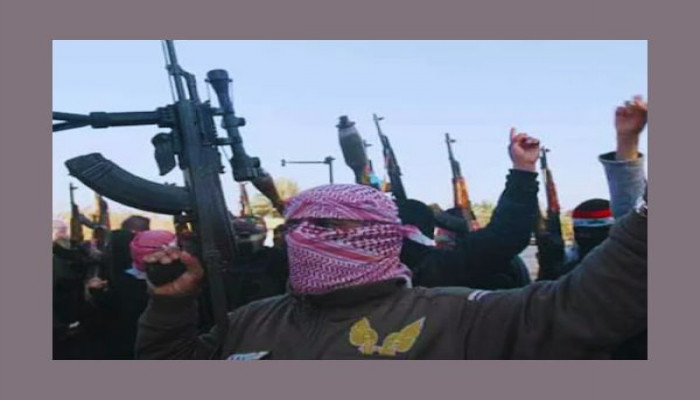India restructures counter terrorism strategy amid growing rift between Jaish and Lashkar
- In Reports
- 10:59 PM, Mar 31, 2025
- Myind Staff
Recent intelligence intercepts have revealed escalating tensions between the terrorist groups Lashkar-e-Taiba (LeT) and Jaish-e-Mohammed (JeM) over the planning and execution of terror attacks in South Asia. According to sources, these differences have widened significantly, forcing India to reassess its security strategy.
Pakistani state actors are reportedly facilitating the infiltration of battle-hardened JeM operatives into India through multiple routes in Jammu and Kashmir. Intelligence data and collected evidence indicate a sharp increase in infiltration attempts in recent months, reinforcing concerns over cross-border terrorism.
Strategic and Ideological Differences Fuel Internal Conflict
The ideological divide between the two groups is a major factor in their growing hostility. While JeM follows the Deobandi sect, a revivalist Sunni movement, LeT adheres to the Ahl-i Hadith ideology, which traces its origins to 18th-century scholar Shah Waliullah Dehlavi. Attempts by the Pakistani military to mediate between them have reportedly failed, leading to intensified rivalries.
A senior intelligence operative, speaking on the condition of anonymity, confirmed the development: “They don't want to work together due to ideological differences. The Pakistani army tried to pacify both groups but failed. Instead, they are now using Jaish in Jammu and Kashmir, offering them safe passage into India. The number of JeM terrorists infiltrating India has surged in the past few months.”
Impact on Terror Networks and Pakistan’s Internal Conflict
Recent assassinations in Pakistan have been linked to this internal conflict. One such case is the killing of Qari Abdu Rehman, a known terror financier and relative of India’s most-wanted terrorist, Hafiz Saeed. He was shot dead by unidentified gunmen in Karachi.
Indian security agencies, investigating a recent infiltration attempt in Jammu and Kashmir’s Kathua district, have identified the terrorists as JeM operatives. Recovered weapons included NATO-grade M4A1 assault rifles and Glock handguns. In contrast, weapons seized from LeT operatives were either manufactured by Pakistan Ordnance Factories or sourced from China.
Sources estimate that out of approximately 120 terrorists currently hiding in Jammu and Kashmir, 95% are foreign nationals with direct links to JeM. The ongoing conflict between LeT and JeM has inadvertently benefited Indian security forces. In one case, a JeM operative’s location in southern Kashmir was revealed by a rival group. In another, a man kidnapped by LeT was later identified as a JeM terrorist.
India Adapts Security Strategies to New Threat Landscape
Indian security agencies are actively restructuring their counterterrorism strategies in response to these changing dynamics. Intelligence reports suggest that after being ousted by former Pakistani President Pervez Musharraf, JeM operated along the Pakistan-Afghanistan border, primarily in Afghanistan’s Nuristan and Kunar provinces. Their resurgence in Pakistan began during Imran Khan’s tenure, with their stronghold expanding around Bhawalpur. This territorial shift deepened tensions with LeT, leading to open hostilities between the two groups despite mediation efforts by the Pakistani military.
A senior intelligence officer highlighted the increasing infiltration attempts: “To mitigate the impact of this internal conflict, the Pakistani army is facilitating the movement of terrorists into Jammu and Kashmir. As a result, infiltration attempts have doubled in recent times.”
Terrorists are using tunnels, riverine routes, and even cutting through border fences to enter Indian territory. Once inside, they operate with minimal logistics and struggle to secure supplies, especially in the Jammu region. Security forces recently received a tip-off from villagers in Kathua about the movement of three suspected terrorists seeking food. Acting on this intelligence, the police intensified their operations.
Strengthening Border Security Measures
The Ministry of Home Affairs has directed security agencies to heighten surveillance along the Line of Control (LoC) and the International Border (IB). Additional Border Security Force (BSF) personnel have been deployed, and a second layer of security is being reinforced to prevent further infiltrations.
Union Home Minister Amit Shah is scheduled to visit the Jammu region this week to review the ongoing counterterrorism operations. He will chair a high-level security meeting to assess the situation and may visit forward posts to evaluate border security measures firsthand.
As India recalibrates its counterterrorism strategy, intelligence agencies continue to monitor the evolving situation closely, ensuring that security forces remain a step ahead in countering any emerging threats.







Comments